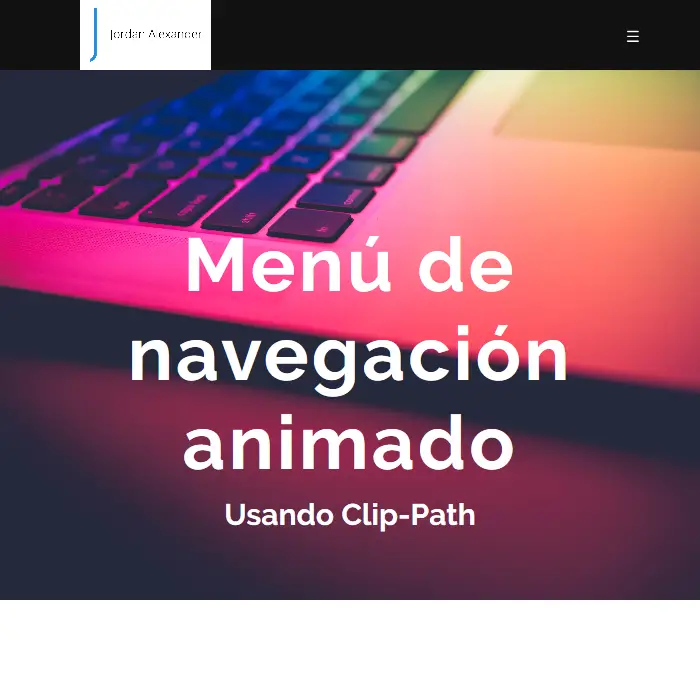
Imagen Html
3 min. readAt some point, everyone comes across HTML. If you’re unfamiliar with HTML, that’s no problem. You can still easily insert images onto a blog post or webpage using it. In fact, it’s not really that difficult if you understand a few basic principles. Here’s a guide to help you out. To simplify everything and help avoid confusion, I’ve color-coded the HTML tags so that you can differentiate them.
Identify first where you’d like to place your image within the HTML and insert the image tag, <img>. Then take your uploaded image, copy the URL and place it within your img parameters prefaced by a src.
This helps identify what the picture entails. For example, if it’s a picture of an umbrella on a beach, write the alt tag to include something about a beach umbrella. Be very descriptive as if you were describing it to someone who couldn’t look at it.
Linking an image in HTML requires a few more steps, especially if you want to change certain attributes and details. Here’s a complete step-by-step that covers all you’ll need. You’ll start with the link tag, which is <a>. The href is where you’ll place the URL. Next, you’ll need the image tag, which is <img>. Como ya se ha dicho, el src es el lugar donde incluirás el archivo de imagen.
Imagen en medio de la página html
In the beginning, the Web was just text, and it was really quite boring. Fortunately, it wasn’t too long before the ability to embed images (and other more interesting types of content) inside web pages was added. There are other types of multimedia to consider, but it is logical to start with the humble <img> element, used to embed a simple image in a webpage. In this article we’ll look at how to use it in depth, including the basics, annotating it with captions using <figure>, and detailing how it relates to CSS background images.
How do we put an image on a webpage?In order to put a simple image on a webpage, we use the <img> element. This is an empty element (meaning that it has no text content or closing tag) that requires a minimum of one attribute to be useful — src (sometimes spoken as its full title, source). The src attribute contains a path pointing to the image you want to embed in the page, which can be a relative or absolute URL, in the same way as href attribute values in <a> elements.
Imagen Html a tamaño completo
Tip: The required alt attribute provides alternative text description for an image if a user for some reason cannot able to view it because of slow connection, image is not available at the specified URL, or if the user uses a screen reader or non-graphical browser.
Note: It’s a good practice to specify both the width and height attributes for an image, so that browser can allocate that much of space for the image before it is downloaded. Otherwise, image loading may cause distortion or flicker in your website layout.
Sometimes, scaling an image up or down to fit different devices (or screen sizes) doesn’t work as expected. Also, reducing the image dimension using the width and height attribute or property doesn’t reduce the original file size. To address these problems HTML5 has introduced the <picture> tag that allows you to define multiple versions of an image to target different types of devices.
The <picture> element contains zero or more <source> elements, each referring to different image source, and one <img> element at the end. Also each <source> element has the media attribute which specifies a media condition (similar to the media query) that is used by the browser to determine when a particular source should be used. Let’s try out an example:
Tamaño de la imagen Html
Before we continue, I encourage you to follow along by copying and pasting today’s code into your own HTML document (or the page we created in Lesson 2: How To Create and Save Your First HTML File by Hand). This will allow you to edit the text, and refresh the file in your web browser as we make edits. This will greatly enhance your learning ability.
Let’s analyze this code. First, <img> is the code for creating an image element. Next, the letters “src” are used as an attribute (which you learned about in Lesson 3: Attributes and Values) and stand for “source”. Basically, we need to provide the web browser with a value to the source of the image. Naturally, the value for the source attribute is “funny-dog.jpg”. This example assumes your image file is located in the same directory as your HTML file. If, for example, you had your image file inside a folder named “images” your code would look like this:
As you can see, in both code examples so far there has not been an ending </img> tag, because the image code is a “self closing” element. This is because unlike a paragraph, we won’t have a plethora of content inside our <img> element, but rather a single image. In fact, HTML5 does not require us to ever “close” our elements, but for organizational reasons I recommend including traditional closing tags for most elements.
